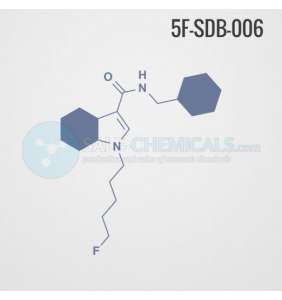- Published in Our materials on Research Chemicals
Research Chemicals is ...
Research chemicals (RCs) are chemical substances primarily used by scientists for research and development purposes. These substances are produced through custom synthesis methods and are strictly intended for laboratory use. They are not meant for human or veterinary consumption.
Despite their legitimate applications in scientific research, some research chemicals are misused for recreational purposes. They are often mislabeled as "not for human consumption" to evade regulatory scrutiny. In some cases, they are marketed under alternative names such as plant food or bath salts to disguise their true nature.
Originally, research chemicals were developed by pharmaceutical companies to explore potential new medications. Before the internet, obtaining these chemical formulas was difficult. However, with widespread online access, illicit manufacturers now replicate and distribute these substances, often synthesizing untested opioids, cannabinoids, stimulants, and steroids, posing significant risks to users.
Research chemicals are commonly available in crystalline, powdered, or capsule form and can also be found on blotter tabs. Their methods of administration vary, including ingestion, injection, smoking, snorting, and even rectal use.
Research Chemical Laws and Risks
Research chemicals play a critical role in drug development and medical research. They are used in laboratory testing to assess therapeutic potential, conduct toxicology studies, and analyze human exposure in forensic toxicology labs. However, many psychoactive chemicals sold under the guise of research chemicals are untested designer drugs that exploit legal loopholes to remain available on the market.
These substances are classified as new psychoactive substances (NPS), which are synthetic variations of existing psychoactive compounds. While they are often marketed as pure active ingredients, their actual composition frequently differs from what is listed on the label. As a result, users are exposed to unknown and potentially dangerous substances, increasing the risk of overdose and addiction.
Research chemicals are human-made compounds designed to mimic the effects of other psychoactive drugs. They are often inexpensive to produce and purchase, making them attractive to recreational users. However, due to their unregulated nature, their effects can be unpredictable and harmful.
Types of Research Chemicals
Research chemicals can be categorized into four main groups:
- Phenyl-amphetamines: Derived from phenylamine, which is naturally found in the human body as well as in foods like cheese, red wine, and chocolate. Notable examples include 2C-B, MDMA, and 4-fluor.
- Tryptamines: A class of organic compounds derived from 2-(indole 3-yl)-ethylamine. Common examples include DMT, LSD, and melatonin. The psychoactive compound psilocybin, found in magic mushrooms, also belongs to this category.
- Cannabinoids: Compounds that bind to cannabinoid receptors in the body. These chemicals are naturally produced by the human body and are also found in plants. Cannabis contains a wide variety of cannabinoids.
- Other Research Chemicals: This category includes various synthetic substances with diverse effects and chemical structures, often designed to mimic the properties of existing drugs while circumventing legal restrictions.
Fast & Discreet Shipping – Buy Research Chemicals Online with Confidence
We offer secure and discreet worldwide shipping for all research chemicals, including Carfentanil, Dibutylone, Dimethylphenidate and other RCs
✔ Fast processing – Orders are shipped within 24-48 hours
✔ Discreet packaging – 100% privacy guaranteed
✔ Global delivery – Including the USA, Europe, and international locations
✔ Easy and secure payment options available













